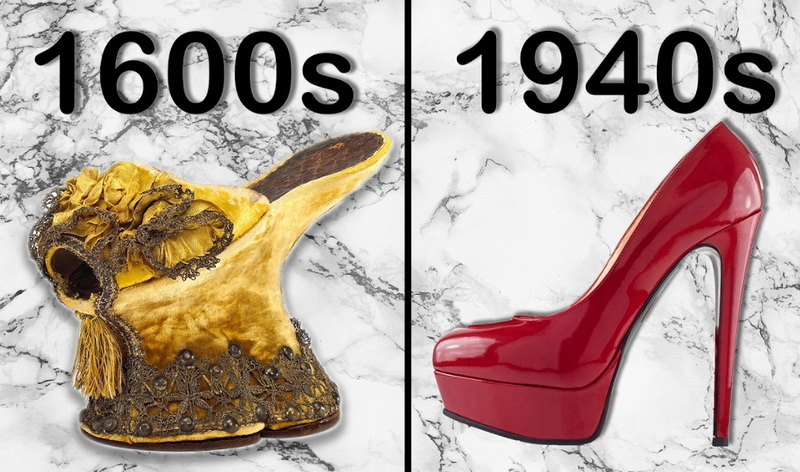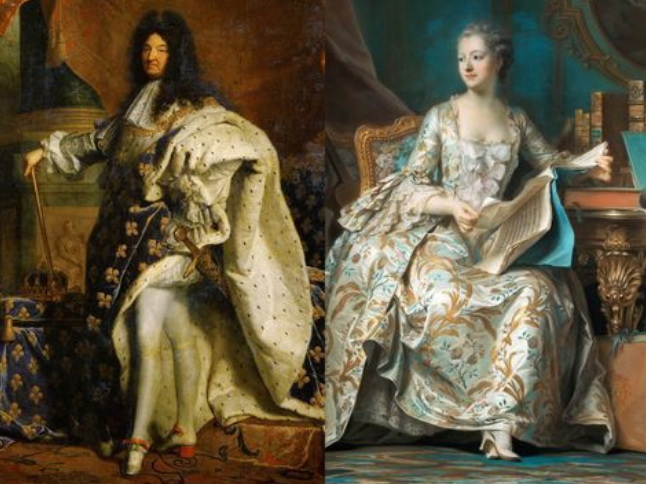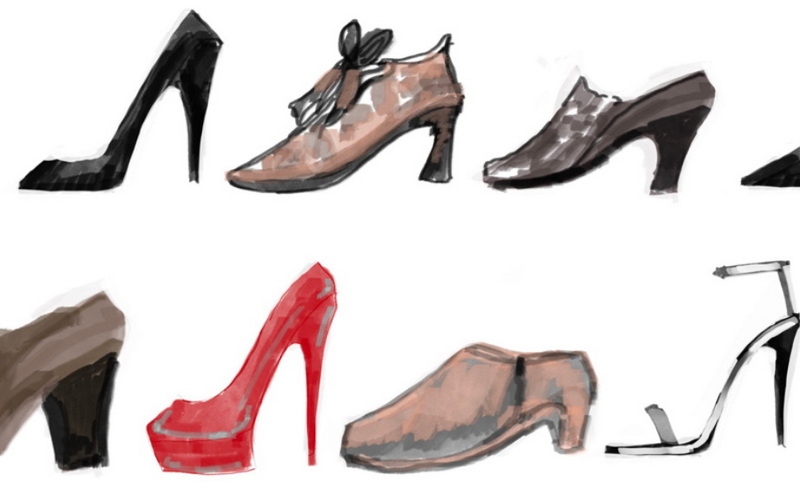Content Menu
● The Ancient Origins of Elevated Footwear
● The Persian Cavalry and the Birth of the Heel
● High Heels Arrive in Europe
● The Transition to Women's Fashion
>> Catherine de Medici: The Trendsetter
>> The Rise of Chopines in Venice
● The 17th and 18th Centuries: High Heels for Both Genders
● The 19th Century: A Shift in Fashion
● The Birth of the Modern Stiletto
● High Heels in Modern Fashion
● The Cultural Impact of High Heels
● Conclusion
● FAQ
>> 1. When were high heels first invented?
>> 2. Who was the first woman to popularize high heels?
>> 3. Why did men stop wearing high heels?
>> 4. When was the stiletto heel invented?
>> 5. How have high heels impacted women's fashion and culture?
● Citations:
High heels have become an iconic symbol of femininity and fashion in modern times. However, the history of high heels is far more complex and intriguing than one might expect. This article will explore the fascinating journey of high heels, from their origins as practical footwear for men to their evolution into a staple of women's fashion.

The Ancient Origins of Elevated Footwear
The concept of elevated footwear can be traced back to ancient civilizations. In ancient Egypt, around 3500 BC, a special type of shoe known as "butcher heels" was used by butchers to keep their feet clean from animal blood[10]. These raised boots served a practical purpose, preventing slipping and maintaining hygiene in the workplace.
In ancient Greece and Rome, actors in theatrical performances often wore elevated shoes called "kothurni" with thick wooden soles. These shoes were used to signify the importance of their characters and make them appear taller on stage[7].
The Persian Cavalry and the Birth of the Heel
The true precursor to modern high heels emerged in 10th century Persia. Persian cavalry soldiers wore heeled shoes to help them stay secure in their stirrups while riding horseback[1][5]. This practical innovation allowed them to stand up in the saddle and fire their weapons more effectively.
High Heels Arrive in Europe
By the 16th century, the concept of heeled shoes had made its way to Europe through trade relations with Persia. Initially, high heels were adopted by European men, particularly among the nobility and aristocracy[6]. The heels served both practical and symbolic purposes, keeping shoes clean from street dirt and signifying high social status.
The Transition to Women's Fashion
Catherine de Medici: The Trendsetter
The pivotal moment in the history of women's high heels came in 1533 when Catherine de Medici, an Italian noblewoman, wore heeled shoes to her wedding with the Duke of Orleans[1][10]. At just 14 years old and of petite stature, Catherine used two-inch heels to appear taller and more confident next to her tall husband-to-be. This bold fashion choice marked the beginning of high heels as a symbol of femininity and elegance.
The Rise of Chopines in Venice
During the 15th and 16th centuries, Venetian women wore extremely high platform shoes called "chopines"[1]. These shoes, sometimes reaching heights of up to 20 inches, were initially associated with prostitutes but later became popular among noblewomen. Chopines served both practical and symbolic purposes, protecting feet and hemlines from muddy streets while also displaying the wearer's wealth and status.

The 17th and 18th Centuries: High Heels for Both Genders
During the 17th century, high heels became increasingly popular among both men and women of the European nobility[1]. King Louis XIV of France, known as the Sun King, was particularly fond of high heels and made them a symbol of status and power. He famously wore red-heeled shoes, which became restricted to the aristocracy[7].
In the 18th century, women's high heels became more distinct from men's, with women's shoes featuring more decorative elements and varied materials[10]. The heels were often used to make women's feet appear smaller, which was considered a beauty standard at the time[1].
The 19th Century: A Shift in Fashion
By the 19th century, men had largely abandoned high heels, while they remained a staple of women's fashion[2]. The Industrial Revolution brought advancements in shoe manufacturing, allowing for more precise and varied designs. In the 1850s, high heels made a comeback in women's fashion, typically featuring low and sturdy heels that provided a modest lift without compromising comfort[7].
The Birth of the Modern Stiletto
The most significant development in the history of women's high heels came in the early 1950s with the invention of the stiletto heel[7]. Named after the Italian word for a small dagger, the stiletto featured a thin, pointed heel that revolutionized women's footwear.
Italian shoe designer Salvatore Ferragamo and French designer Roger Vivier are often credited with the creation of the stiletto heel[7]. Ferragamo experimented with steel-reinforced heels, allowing for greater height and a more slender profile. Vivier, working for Christian Dior, introduced the stiletto heel in his 1954 collection, cementing its place in fashion history.
High Heels in Modern Fashion
Today, high heels come in a vast array of styles, heights, and designs. They remain a popular choice for women's formal wear, special occasions, and everyday fashion. While some criticize high heels for their potential health impacts and association with unrealistic beauty standards, others celebrate them as a form of self-expression and empowerment.
The Cultural Impact of High Heels
High heels have played a significant role in shaping cultural perceptions of femininity, sexuality, and power. In the early days of erotic photography during the Victorian era, high heels featured prominently, becoming a symbol of female sexuality[8]. This association has persisted throughout the 20th and 21st centuries, with high heels often portrayed as a symbol of feminine allure in media and popular culture.
Conclusion
The history of women wearing high heels is a fascinating journey that spans centuries and cultures. From their practical origins in ancient civilizations and Persian cavalry to their adoption by European nobility and eventual transformation into a symbol of femininity, high heels have undergone significant changes in both form and function. The pivotal moment came in the 16th century when Catherine de Medici popularized heels for women, setting the stage for their evolution into the diverse styles we see today.
As we've explored, the story of high heels is not just about fashion, but also about power, status, and cultural perceptions of gender. While their popularity has fluctuated over time, high heels have remained a constant presence in women's fashion for nearly five centuries. Today, they continue to be a subject of debate, admiration, and artistic expression, reflecting the complex relationship between fashion, society, and individual choice.

FAQ
1. When were high heels first invented?
High heels, in their earliest form, can be traced back to ancient Egypt around 3500 BC. However, the heeled shoes more similar to what we know today originated in 10th century Persia, where they were worn by cavalry soldiers[1][5].
2. Who was the first woman to popularize high heels?
Catherine de Medici is widely credited as the first woman to popularize high heels as a fashion statement. In 1533, at the age of 14, she wore two-inch heels to her wedding with the Duke of Orleans, setting a new trend in women's fashion[1][10].
3. Why did men stop wearing high heels?
Men gradually stopped wearing high heels during the 18th century. This shift was partly due to the Enlightenment era's emphasis on rationality and practicality, which favored more functional footwear for men. Additionally, as women increasingly adopted high heels, they became associated with femininity, leading many men to abandon the style[2].
4. When was the stiletto heel invented?
The stiletto heel, characterized by its thin, high heel, was invented in the early 1950s. Italian shoe designer Salvatore Ferragamo and French designer Roger Vivier are often credited with its creation. Vivier introduced the stiletto heel in Christian Dior's 1954 collection, revolutionizing women's footwear[7].
5. How have high heels impacted women's fashion and culture?
High heels have had a significant impact on women's fashion and culture. They have been associated with femininity, sexuality, and power throughout history. In the Victorian era, they became linked to erotic imagery, and this association has persisted in popular culture. Today, high heels continue to be a subject of debate, with some viewing them as empowering and others criticizing their potential health impacts and societal expectations[8].
Citations:
[1] https://www.thefactshop.com/fashion-facts/history-of-high-heels/
[2] https://www.fastcompany.com/90775177/the-long-history-of-heels-from-a-symbol-of-mens-power-to-womens-burden
[3] https://www.youtube.com/watch?v=_7mKFrV3Mpk
[4] https://unsplash.com/s/photos/heels
[5] https://www.youtube.com/watch?v=YNT5HIE5r4M
[6] https://londonrunway.co.uk/the-history-of-high-heels/
[7] https://www.youtube.com/watch?v=IrcWn7NTihI
[8] https://themoderndirectory.com/education/the-history-of-high-heels/
[9] https://unsplash.com/s/photos/high-heels
[10] https://study.com/academy/lesson/who-invented-high-heels.html

















